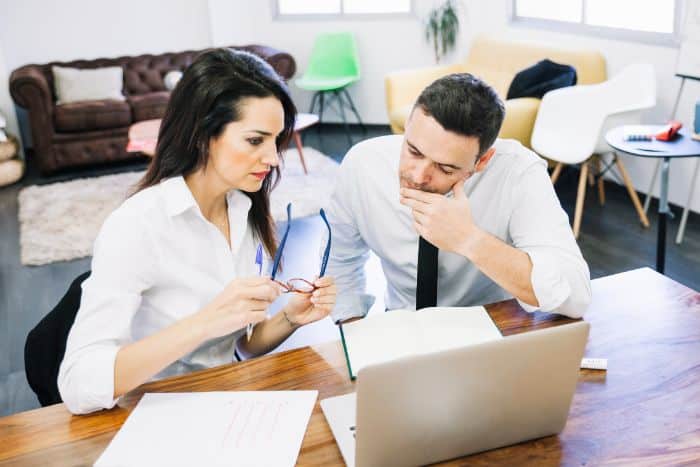Reducing Preauthorization Costs: A Practical Guide
Discover effective strategies for reducing preauthorization costs in healthcare. Learn how to streamline processes and save money today!

Delving into the prior authorization process reveals it as a crucial step where healthcare providers must obtain approval from a patient’s insurance company before proceeding with certain treatments or prescribing specific medications. This ensures that the proposed care is covered under the patient’s plan, aiming to streamline healthcare delivery and cost management.
Navigate the prior authorization process with ease!
Table of Contents
Reducing Preauthorization Costs
 It is impossible to dispute the importance of preauthorization procedures in the field of healthcare. However, due to related inefficiencies and administrative costs, these procedures frequently place a heavy financial strain on providers. This essay will examine creative strategies for reducing preauthorization expenses without sacrificing the caliber of patient treatment. Through investigating options like technology integration, workflow optimization, and advocating for regulatory changes, we try to make things easier financially for providers without sacrificing quality.
It is impossible to dispute the importance of preauthorization procedures in the field of healthcare. However, due to related inefficiencies and administrative costs, these procedures frequently place a heavy financial strain on providers. This essay will examine creative strategies for reducing preauthorization expenses without sacrificing the caliber of patient treatment. Through investigating options like technology integration, workflow optimization, and advocating for regulatory changes, we try to make things easier financially for providers without sacrificing quality.
The Real Impact of Preauthorization
Although preauthorization serves as a crucial gatekeeper for care appropriateness, its financial implications for healthcare providers are profound. Research by the American Medical Association underscores this, revealing that providers dedicate a significant portion of their time—approximately two business days per week—to preauthorization activities, indicating a substantial resource investment.
The monetary ramifications extend beyond direct costs, with each preauthorization averaging $20 to $30, but sometimes soaring as high as $200. When multiplied by the multitude of preauthorizations handled weekly, the cumulative financial burden becomes staggering.
Indirect expenses only make the problem worse, such as lost productivity from healthcare staff taking on administrative duties. Preauthorizations that are delayed or rejected may also lead to postponed treatments and increased patient dissatisfaction, which could harm a provider’s reputation and financial results.
Preauthorization thus affects more than just processing costs; it also affects patient satisfaction, total provider viability, and operational efficiency. Given the changing landscape of healthcare, providers need to adopt creative strategies to lessen the financial burden that comes with preauthorization regulations.
Enhancing Preauthorization Workflows
Efficient workflows offer a pathway to significant preauthorization cost reduction by minimizing labor-intensive manual processes. A streamlined approach necessitates a comprehensive understanding of the preauthorization journey, assigning distinct roles to team members to eradicate confusion and redundancy. Automation of repetitive tasks, such as data entry, can further liberate clinical staff to concentrate on patient care.
Efficient workflows not only optimize resource allocation but also facilitate better preauthorization status tracking, potentially mitigating delays and denials that lead to patient dissatisfaction. Consequently, streamlined workflows not only cut administrative costs but also elevate patient experiences and streamline overall healthcare operations.
Pragmatic Strategies for Workflow Streamlining

Implementing sustainable practices to streamline preauthorization processes can substantially diminish associated costs while enhancing operational efficiency. Here are some actionable tips to consider:
Standardization: Establish a uniform preauthorization process across all departments to minimize errors and expedite procedures.
Training: Regular training sessions for staff involved in preauthorization processes can enhance efficiency and accuracy.
Technology Integration: Employ specialized software solutions for preauthorization tasks to automate processes like data entry and status tracking.
Bottleneck Identification: Periodically review preauthorization processes to identify and rectify bottlenecks hindering efficiency.
Payer Communication: Maintain open lines of communication with payers to stay abreast of policy changes and avoid unnecessary denials or delays.
By incorporating these practical tips, healthcare providers can streamline preauthorization processes, reduce costs, and enhance patient satisfaction.
Harnessing Technological Solutions
In today’s digital landscape, technology emerges as a potent ally in alleviating preauthorization costs. Healthcare providers can leverage various technological solutions to automate and streamline preauthorization processes, thus minimizing manual intervention, reducing errors, and conserving time and resources.
Automated preauthorization software stands out among these solutions, capable of handling routine tasks such as data entry, status tracking, and payer communication. These systems expedite the preauthorization process, freeing clinical staff from administrative burdens and averting errors that could lead to denials or delays.
Integrated Electronic Health Records (EHRs) also play a pivotal role by simplifying preauthorization processes through automated data retrieval, reducing the need for manual input. Some EHR systems even feature integrated preauthorization tools, enabling seamless management within existing systems.
While technology promises significant cost reduction and efficiency gains, providers must select solutions aligned with their specific needs and workflows. Data security and privacy must also remain paramount in leveraging these advancements.
I'm very thankful for Portiva who I know is looking after my practice while I'm gone the virtual assistants can manage prescription refills, documents they can triage patients and just kind of answer administrative questions and they can handle a lot on their own. But also, they're very good about contacting me if there's any emergency or anything I need to attend to. So I'm very thankful for Portiva they can help almost any provider almost anywhere and it really allows for some good work-life balance as I'm getting to experience right now at my family farm so I'm very thankful for Portiva and I'm very happy to use their services"

Board Certified Family Medicine Physician

Portiva's Virtual Medical Assistant - I have all the support I need. There's somebody checking my email, any patient messages. Patients are still able to schedule and handle any scheduling issues and any kind of billing that needs to still go through. Portiva hands handles it all for me. I have support i have somebody that I can access 24/7 pretty much. It's all very seamless. If somebody has an emergency or needs a medication called in. I know that the va's at portiva will handle that for me.

Board Certified Family Medicine Physician

Balancing Cost Reduction with Quality Care

While cost reduction is imperative, preserving the quality of care remains paramount for healthcare providers. Striking a delicate balance between the two is essential to foster patient trust, uphold reputation, and ensure long-term sustainability.
Efforts to streamline preauthorization processes and reduce costs should not compromise patient experience or the standard of care. Technology and process enhancements should aim to facilitate better patient-caregiver interactions, minimize treatment delays, and enhance overall patient journeys.
Training programs should underscore the significance of empathetic, patient-centered care, ensuring that human touch remains integral to healthcare delivery. Ultimately, the objective is to cultivate an environment blending efficiency, cost-effectiveness, and compassionate care.
In Conclusion
Reducing preauthorization costs necessitates thoughtful planning, prudent technology and training investments, and a steadfast commitment to high-quality patient care. Utilizing technology can improve efficiency, save costs, and streamline procedures. Examples of this include AI and automated preauthorization systems.
Adoption of these technologies, however, must take into account the specific requirements of each provider, the complexities of the workflow, and data security issues. Long-term sustainable growth for healthcare providers is also fostered by striking a balance between cost and quality of care. This balance improves patient satisfaction.
The preauthorization paradigm will continue to be shaped by the strategic integration of technology as we traverse the changing healthcare landscape, opening the door for the delivery of high-quality, affordable healthcare.
To learn more about healthcare cost control that can enhance your medical practice. Discover more about Portiva and unlock a world of possibilities by visiting our homepage today!
- Prior authorization challenges
- Obtaining prior authorization with ease
- Eliminate precertification denials
- Prior authorization guide
- Importance of prior authorization training
- Optimized prior authorization strategies
- Prior authorization support
- Why prior authorization training is crucial in healthcare
- The advantages of prior authorization support
- Maximizing prior authorization
- Prior authorization policy changes
- How outsourcing preauthorization works
- Solutions to precertification challenges
- Prior authorization services
- Prior authorization cost-benefit
- Prior authorization and patient care
- Prior authorization workflow efficiency
- Prior authorization in patient access services
- The impact of precertification services

